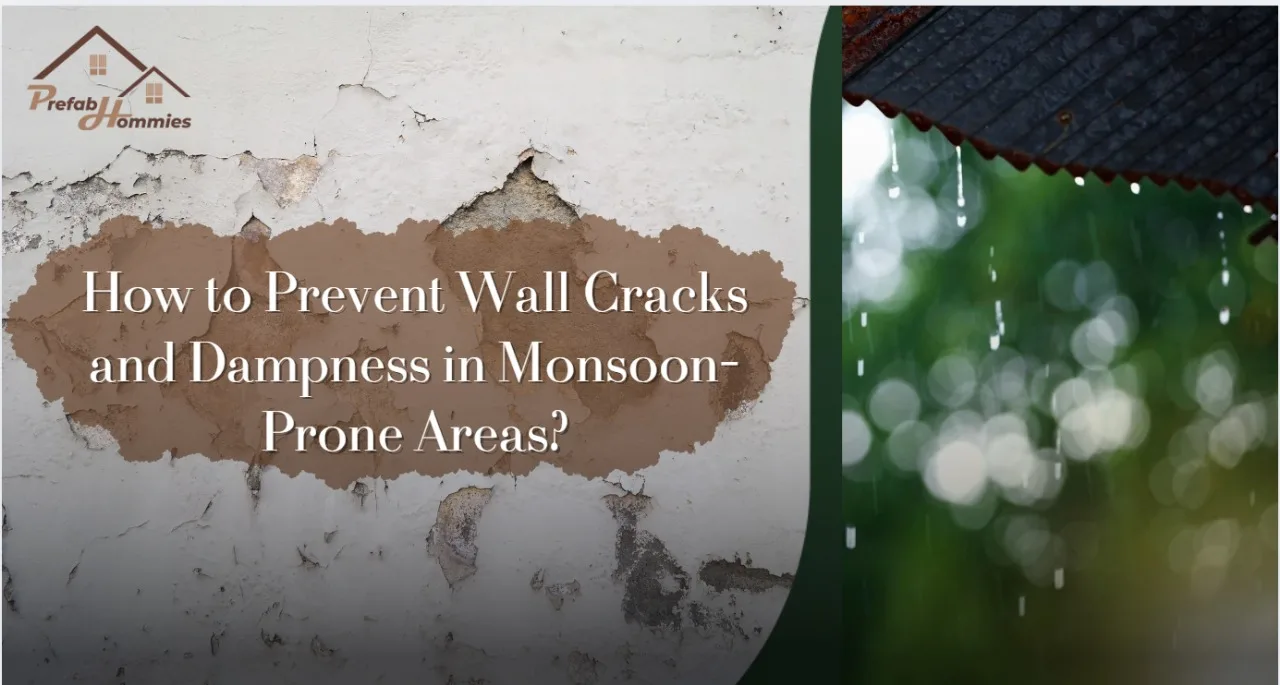
How to Prevent Wall Cracks and Dampness in Monsoon-Prone Areas?
Monsoons are special: we adore the cool breeze and the rain. But excessive rains may bring inconveniences at home such as cracks on walls and wet walls. And given some good monsoon-proof home construction tips we could still have safe, clean and happy homes during the rainy season. Read on to find out the causes and preventive ways of ensuring it does not happen effectively.
The reason why walls crack and are wet during monsoons
The following are some of the reasons as to why walls cramp and dumps during monsoon. See the reasons below.
- Unless walls are waterproofed, the rainwater penetrates them. This water loosens the plaster and breaks cracks.
- Poor drainage around your residence results in water puddling around walls making it much damper.
- Walls expand and contract due to temperature changes (cold rain follows sunshine) and the walls crack.
- Building materials of low quality and old cannot resist monsoon water-the walls crumble and there are wet spots.
Causes & solutions for wall cracks in rainy season
These are some of the causes and reasons as to the wall cracks during the rainy season as discussed below. Check them out.
Cause: Wetness comes in through small holes or old plaster.
Solution: Prior to monsoon, check walls and seal even small cracks with polymer based crack fillers or cement putty.
Cause: Water is close to walls since the gutters or pipes are clogged.
Solution: Clear your drainage gutters, downspouts, and pipes in order to ensure the flow of water does not go towards your house.
Cause: Lack of proper ventilation causes moisture to be trapped inside.
Solution: Free air flow. Use vents and open windows to assist in the drying of walls.
Cause: Water in wet soil is attracted to the basement or ground floor.
Solution: A damp proof course (DPC) or waterproof membrane should be laid on the ground to prevent rising damp.
Monsoon-proof home construction tips
These are the useful tips to have your house strong and dry:
Waterproofing over all things- Use 2-3 layers of high quality water proofing solution over roof, terraces and exterior walls.Apply waterproof putty on cracks then paint.
Maintain drainage powerful- Clean gutters, downspouts and drains prior to monsoon.Ensure that the land is slanting away from the home to prevent puddles. Install French drains or put gravel in.
Apply waterproof paints and primer- Select waterproof or silicon modified paint exterior.Apply a primer coat to prevent alkali and moisture.
Make sure that windows and doors are sealed well- Use silicone caulk or weather strips in and around frames to prevent water leaks.Install fit rubber seals on the doors that are outside to prevent splashing water.
Make it well ventilated- On sunny days keep windows open to allow air to circulateExhaust kitchens and bathrooms to lessen dampness.
Basement and foundation care- Install damp-proof barriers such as bitumen paint, plastic sheets or DPC.French drains or sump pumps should be installed in case the water is accumulated around the foundation
Regulate the interior humidity and mould- In case of wet spots, clean using a mixture of bleach and water.Use waterproofing products that are salt and molds resistant.
What can be done to make a house safe during the monsoon?
- The following are some of the things that you can exercise in order to ensure that the house is safe and secure during monsoon and its impact. Experiment with everything provided below.
- Waterproofing of roofs and exterior walls is done well to avoid seepage of water. Use good sealants before the rains, clean gutters and slope them away from the foundation. Water resistant paint and a well draining terrace create the first line of defence.
- Put rubber gaskets and weather‑stripping over all doors and windows. Prevent wind ‑blown showers by sealing cracks around frames with silicone caulk. This strengthens insulation and comfort- as an addition to monsoon-proof home building suggestions.
- Make sure drains, gutters and downspouts are not clogged by dead leaves and debris. Make sure that the storm water drains easily- no basement flooding. Checks prevent waterlogging on structures and stagnation of water.
- Check walls to see whether they have moisture and cracks. Reasons and remedies to cracks in walls during rainy season are filling with polymer based fillers, water proofing coating and frequent inspection to avoid bigger failures.
- Raise electrical outlets, and install switches and ELCBs/RCCBs that are ISI marked. Avoid loose wires, unplug devices that are not used, and call electricians. This eliminates shocks when there is a power surge and it is safe in wet conditions.
- Coat wooden furniture with protective varnish and moisture proof paint on the doors and windows. Keep fabrics in dry areas. Use light curtains instead of sunlight that helps in drying up indoors.
- Keep the air flowing with dehumidifiers and ventilators. When it is safe, open windows to avoid the growth of molds. Damp zones have exhaust fans that prevent mustiness and health dangers.
- Check and fix the pipes and foundation joints. Put in French drains or sump systems where there is ground water collecting against walls. Drainage under walls will help avoid seepage and structural problems.
Sum Up!
Here we have come to an end of how we can keep our house safe and secure during monsoon effects such as wall dampness and cracks. If you need any assistance , then you can connect with the Prefab Hommies. They will guide you best regarding the same and help you in doing it. So go for it and protect your house to the fullest. Do follow the above given Monsoon-proof home construction tips and

